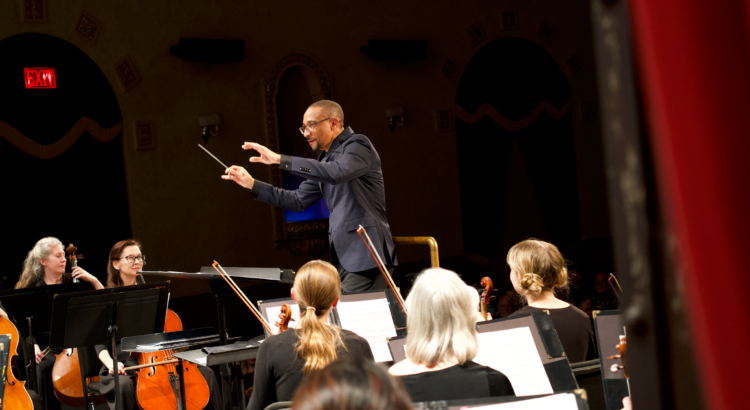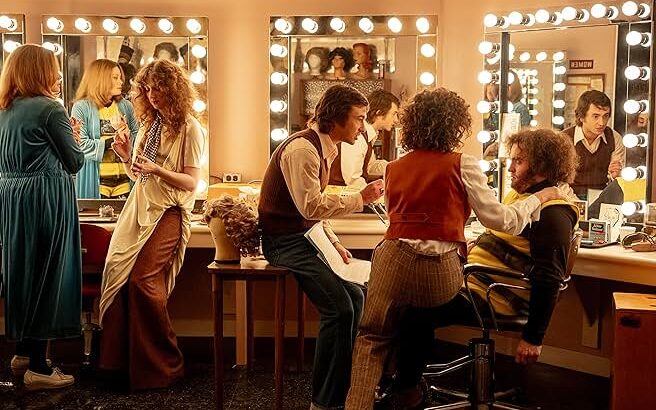Oh, Mikey Madison. What can’t you do?
From the start of “Anora,” the actress that is so soft-spoken in interviews blasts into the picture as Anora– nicknamed Ani– with her brazen confidence and strong Brooklyn accent. A 23-year old sex worker, we are first introduced to Ani in element working at the club. Between vape puffs, Ani charms wealthy visitors into buying dances from her, until her boss pulls her to a guest who requested someone who speaks Russian.
Ani speaks some Russian, and is then introduced to Ivan, who says she can call him Vanya (Mark Eydelshteyn). The next day, she visits his mansion for a private booking, where he tells her that he comes from a very wealthy Russian family. He offers her $15,000 in cash to be his “girlfriend for the week,” and so the whirlwind of sex, drugs and alcohol begins. It culminates with a shotgun wedding in Las Vegas so Vanya can stay in the United States.

It seems like a happy ending for Ani, who now has access to all the riches she could ever imagine – but unfortunately it is never that easy. While she takes the marriage very seriously (“We are mah-rried and we are in love!”), when Vanya’s godfather and chaperone Toros learns he got married, the jig is up. The “muscle” – Garnick (Vache Tovmasyan) and Igor (Yuriy Borisov) — arrives at the mansion’s front door, and a panicked Vanya sprints out the door, leaving Ani alone, confused and angry.
Toros arrives, and after a long sequence of fighting and overlapping yelling in Russian and heavily accented English, Ani is convinced to help them look for Vanya. And off we go into our second genre.
The movie is described on google as a comedy/romance. Where is drama in that description? This genre-bender begins with a whirlwind Cinderella-story romance between Ani and Vanya and transitions into a situational comedy with “Home Alone” style injuries of the sterotypical “Russian goon” as the four look for the spoiled oligarch across the city and eventually in every night club. The final act of the movie – once a blackout drunk Vanya is finally found and is dragged to confront his parents – has a much darker tone.

This rollercoaster of a plot left me in tears at the very final scene, alongside Madison on the screen. From the barrage of sex scenes at the start to the dry ironic comedy of the middle, the ending is quieter, more subdued, and sad. And honestly, this was the best possible way to conclude the story. A classic “rags to riches” tale is so on the nose, and at first, that was where I expected it to go. When Ani leaves the club, for example, she carries a clear pair of heels and even explicitly says that she feels like Cinderella. For a moment, I feared it might veer into a clichéd rom-com, but it took a turn I didn’t expect.
One unique aspect of the movie was the constant interchange between English and Russian. For most of the Russian spoken, there were subtitles on-screen, but occasionally there was some Russian left untranslated. Madison said in an interview that she didn’t know any Russian before this role, and learning how to speak Brooklyn-accented Russian was even more difficult; but to someone who doesn’t speak any Russian like myself, it all sounded the same.
Madison is spectacular as Ani. She portrays Ani as tough-as-nails but also vulnerable, both in key moments and with subtle expressions. Eydelshteyn also acts with incredible nuance; the sincerity that he adds to the immaturity of Vanya makes it believable that a street-smart Ani would fall for his promise of genuine love.
“Anora” is both sadly ironic and darkly funny. Don’t underestimate the serious merit of this film from the flashy trailers; it will leave you with both more laughs and more thoughts than when you came in.








